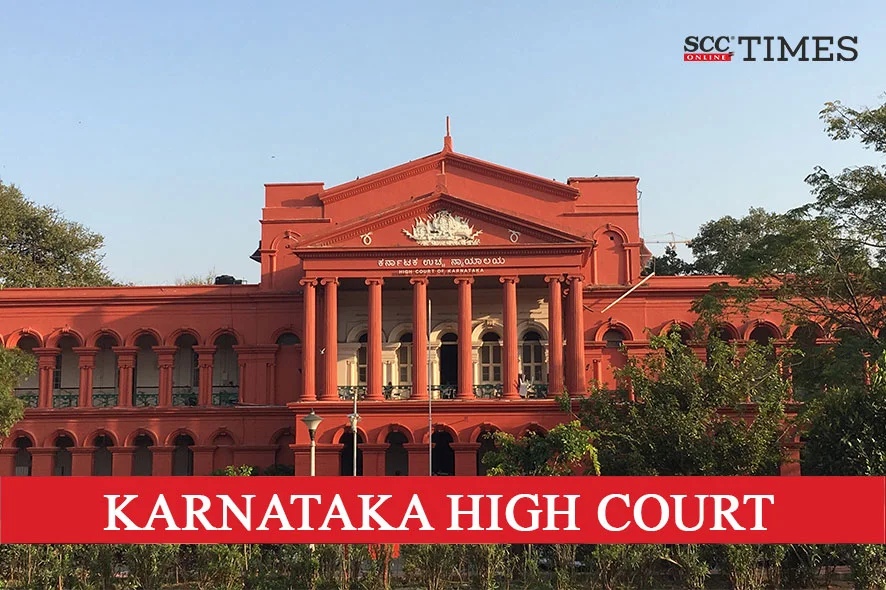Karnataka High Court: Raising concerns over lack of compliance and implementation of the High Court’s judgments and taking note of government authorities sitting tight over Court’s orders for unreasonably long period, A division bench of the Court comprising of N.V. Anjaria, C.J., on 08-04-2024 initiated suo-motu proceedings exercising powers under Article 226 of the Constitution disapproving inaction by government departments and semi-government authorities, statutory bodies or Corporations.
The Court strictly noted that casual, lethargic and insensitive approach on the part of the authorities towards the compliance of the orders and directions of the courts cannot be tolerated. It has to be dealt with sternly. “As the justice delayed is justice denied, too belated compliance is not to be countenanced, but has to be viewed as contempt of court itself committed in disguise or in indirect manner”.
“One of the measures to judge democratic commitment of any government is the respect it accords to the orders of the court. At the same time, the real majesty of the Courts lies in its vibrant existence and effective functioning. Such vibrancy and effectiveness, in turn, would be achieved by ensuring due implementation and swift obedience of the judgments and orders of the Court”.
Observations:
In a stern order, the Court noted that no order of the Court should lose its efficacy because of its non-compliance or compliance at a belated stage which would render the order meaningless. The Court further noted that compliance of the Court’s orders and directions is imperative, or else, it would have the tendency of shaking the confidence of public in the administration of justice.
It was pointed out that long inaction and supine apathy towards compliance of the Court’s orders and directions, tantamounts to obstruction in the course of justice.
Pointing out that State and its authorities are stakeholders in this facet of administration of justice, therefore, when the judgments and orders passed by the courts of law are shelved for one or other reason, out of lethargy or because of red-tapism, then such state of affairs become fatal to the interests of administration of justice, and it erodes the faith and confidence of a common man in the judicial machinery and judicial system.
While dealing with the petitions filed under the Contempt of Courts Act, 1971, the Court pointed out that the directions and orders of the Court were not attended to by the authorities, and even the formal kind of directions, which although would affect the rights of the litigants, remained unattended and without any compliance. It was noted that the authorities concerned have virtually disregarded the compliance of the Court’s directions.
The Court further observed that orders of the Courts so disregarded by the authorities, may bring about a situation where the public at large would view that the system has failed. It would be considered that the Courts have been losing their authority and their orders do not have any effect on the authorities of the Government. “Long and persistent denial of the rights flowing from the court orders could themselves be said to be violative of the facets of Article 14 read with Article 21 of the Constitution”.
Directions:
Based on the afore-stated observations, the Court initiated suo motu proceedings in the matter and directed the Registrar to issue notices to several State Government departments and arraign them as respondents.
The Court also directed that the semi-government authorities, statutory bodies or corporations which are also the limb of the State and therefore bear equal responsibility, should also be arraigned as respondents.
The Court also called upon the respondents to provide their response to the following queries by 05-06-2024, which is to be the next date on which the proceedings are to be listed by the Registry-
i. What method of processing is adopted after and once orders or judgments of the High Court, or any other Court, are received by the Department or in the office of competent authority?
ii. Whether any special branch or designated authority is made functional, to treat, deal with and act upon, the orders and directions by the courts to take them to their logical end of compliance?
iii. Whether any machinery or mechanism is created internally in the Department or governmental bodies for ensuring compliance of the directions of the courts as may be required as per the orders and judgments of the courts?
iv. What steps are generally taken by the authorities concerned to attend to, to supervise, to monitor and to effectuate the orders and directions of the courts?
v. Whether any disciplinary measures are evolved or taken against the erring Officers who are found to be sitting tight over the orders and directions of the courts or those who are guilty of non-compliance within the time stipulated in the order or within reasonable time?
The Court also directed the Registry to submit list of pending contempt petitions filed under Contempt of Courts Act, 1971 and furnish the figures of initiation of contempt of court cases every three months during the last two years.
The Registry was directed to make a list of pending contempt applications wherein the orders and directions of the courts have remained non-complied beyond six months.
The Court clarified that the purpose of these proceedings is to streamline the procedure for compliance of the orders and directions of the courts. It is necessary that at the hierarchies of Government, a proper and effective machinery is created to oversee the regard, respect and implementation of the court’s orders. “The speedy implementation of the judgments and orders of the Court is inextricably interwoven in the enforcement of rule of law. It is part of observance of rule of law”.
[Order on suo-motu proceedings under Contempt of Courts Act- PIL, order dated 08-04-2024]








